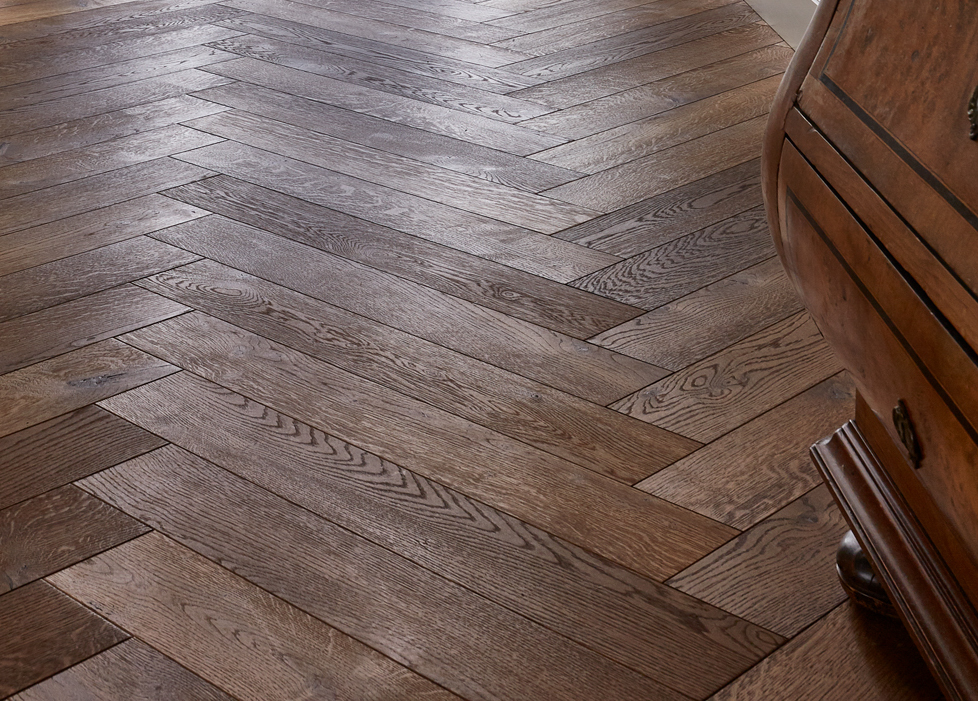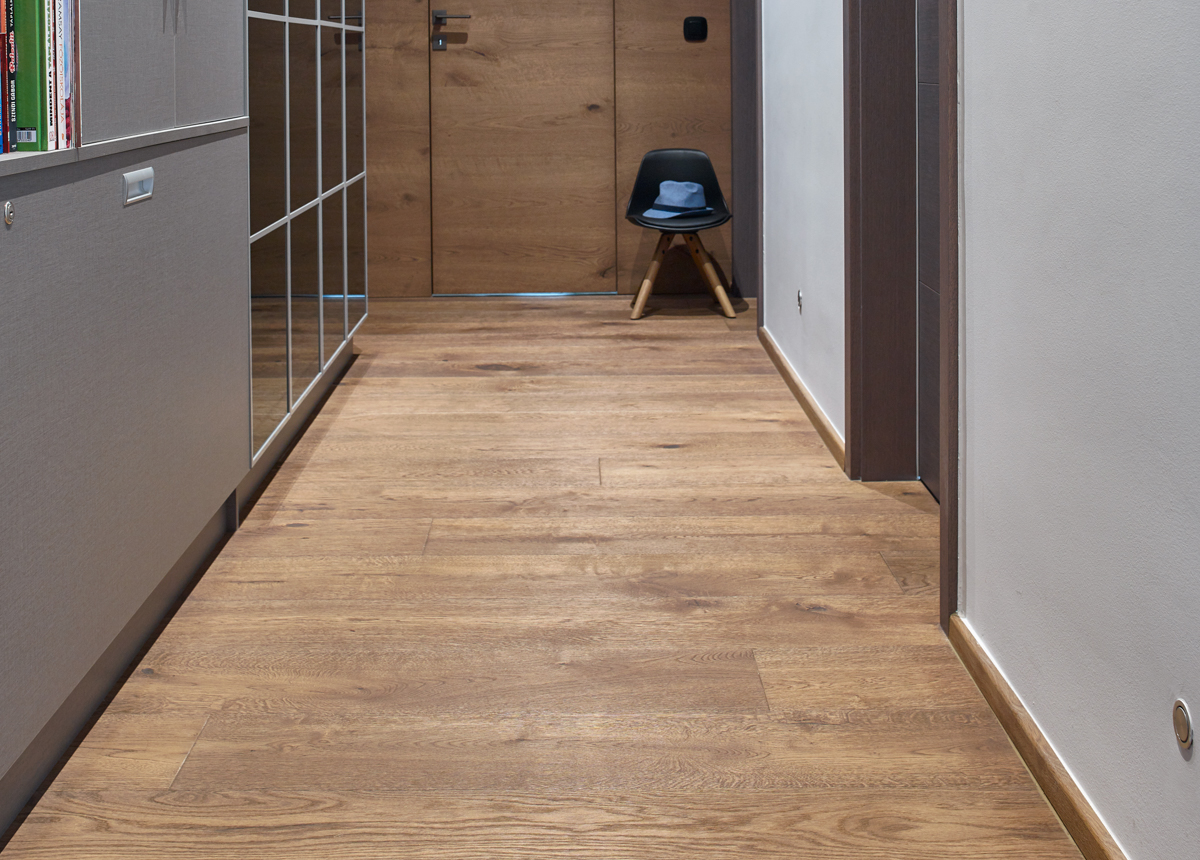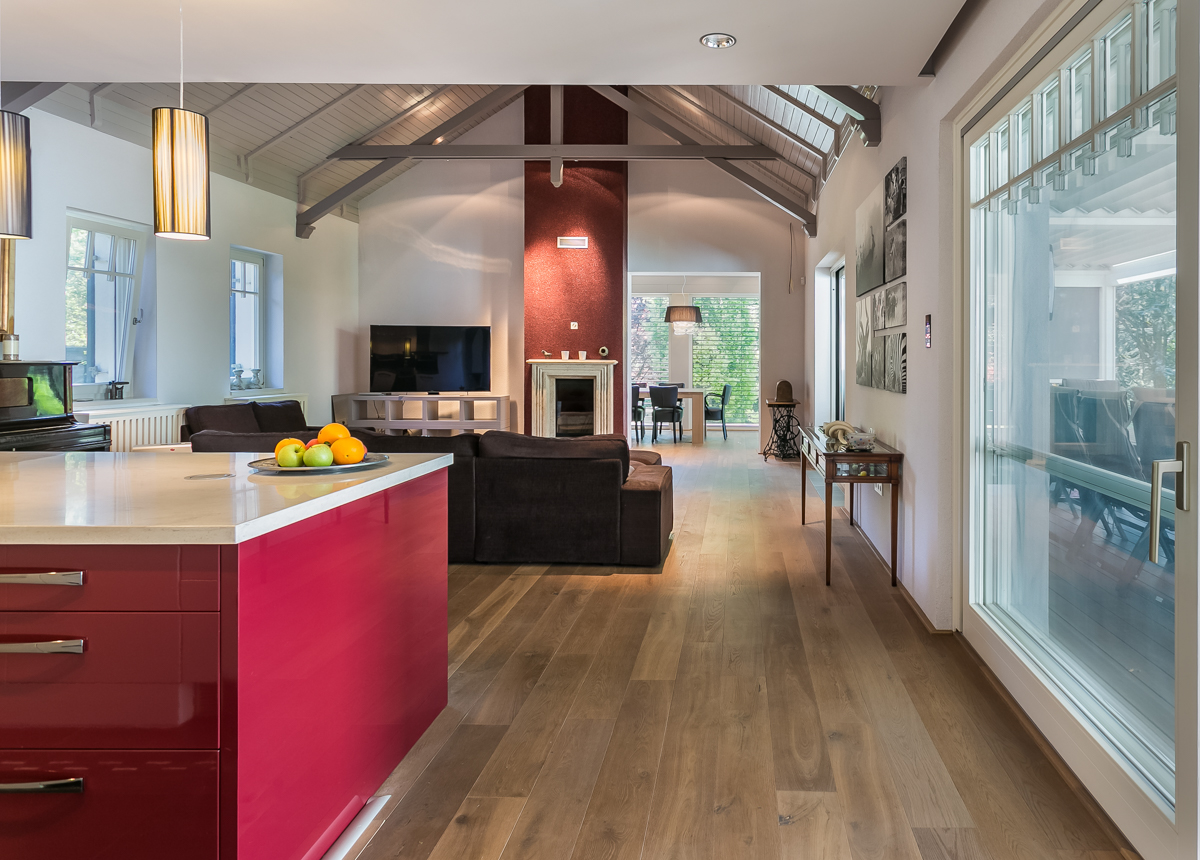How to install quality wood floors?
Before starting the laying of straight planks or parquets, it is important to be aware of all the aesthetic and technological aspects that will need to be kept in mind during the installation. For this we have gathered useful information you can see summarized in this post.
The art of parquet installation
The installation of the parquet requires craftsmanship, so a skilled professional is inevitable for an optimal result. The laying pattern of the herringbone/chevron is just one thing that must be implemented precisely, as the quality completion of the installation is just as important. It is crucial to choose a proficient expert with reliable references, who will execute the installation according to the instructions. But for us it is of great significance that our clients also know the basics of this process and its possible pitfalls. Therefore, we recommend reading carefully our product description and documentation in every case.

How to install quality wood parquet and the role of skirting
In the era of modern floor coverings many people would like to omit the skirting, but in case of quality natural wood parquet it is not possible. Skirting is a technical necessity. Between the living wood flooring and the wall an expansion gap must be left, because the natural wood continues moving: it expands or shrinks, according to the room climate. The dilatation gap is thus inevitable, and the skirting’s role is to hide it. But the skirting has more advantages to offer. It is a useful help for cleaning: the skirting protects the wall from dirt. And we should not neglect its optical effect either. When the floor area is small, it can visually create a spacious look, because the skirting optically enlarges the flooring surface.

Wooden parquet and design, or how to install the straight planks?
The straight planks can be installed by screwing down to a sub-construction or - thanks to the improvement of technology – by gluing down to the subfloor. Floating installation method is also possible on Elastilon. As it is always the conditions in the place of installation that determine the appropriate method, it is the best to turn to an expert in every case. At the same time, the laying style is not just a technical question. If you choose the wood flooring because of its unified appearance and spatial effects, it is important to plan the direction of installation in advance. If the planks are laid transversely to the longer walls in a long room, that visually enhances the size of the room. But if the planks are laid parallel to the longer walls, that extends the length of the room even more.

General requirements for the installation of solid wood, Duplex and Triplex floorings
All working phases causing humidity (such as bricklaying, tiling and painting) must be finished at the construction site before starting the installation of the wood flooring. This is necessary, because increased humidity can cause wooden floors to absorb moisture. The next step is to examine whether the subfloor is suitable for installation.
Quality examination and preparation of subfloor
Besides measuring the moisture content of the subfloor (CM% measurement), the examination of the general quality, unevenness and dimensional accuracy of the screed is necessary too. If possible, the screed manufacturer should be asked in writing if the subfloor is suitable for the installation. During the installation, the relative air humidity of the room should be between 40 and 60 %, and the temperature should be around 20 °C.
Requirements for installation in case of underfloor heating
The installation is recommended on cement screed or anhydrite screed (recommended min. E300). In case of hot water underfloor heating, the screed should be heated up professionally, and the heating protocol made by the engineer should be shown at the construction site. Please turn off the heating 48 hours before starting the installation! In winter, the temperature of the surface should be lower, but minimum 15-18°C, and it can be raised only 72 hours after the installation. The screed manufacturer should be asked in writing about the amount of residual moisture in the screed allowing the installation of wooden floor. If possible, this value should be reduced by 0.3 CM%.
Preparation of the subfloor in case of gluing installation
In case of gluing technology, the flooring must be fine-sanded, and the dust should be removed with vacuum cleaner. If you would like to glue the flooring on plaster (calcium-sulphate) or anhydrite screed, we recommend to use primer coating. Professional use of primer coating leads to the improvement of adhesion values. Moisture-closing blocks the moisture coming afterwards from the subfloor, e.g. in case of rooms without basement. The primer, the levelling component and other materials must be compatible with the adhesive. If gluing is carried out on non-cement or plaster (calcium-sulphate), but on dry screed, chipboard or other type of subfloor, please, consult before the installation with the manufacturer and the construction company about the suitability of the subfloor. Installation on wooden joints (secret nailing) must be carried out according to ÖNORM B 2218.
Maximal width of installation in case of solid wood floorings
Laying solid wood straight planks above a width of 8 meters is not recommended. In case of a larger area, an expansion gap must be formed and the existing expansion gaps must be taken into account. Keep a distance of at least 15 mm from the wall, heating pipes and other fixed points. You can read about laying our floors step by step by clicking here.
Floating installation of wood floors
If the screed does not meet the conditions required for gluing technology (bonding force, etc.) - for example, in the case of problematic substrates during a renovation - the substrate and the wooden floor must be separated by a foil (ELASTILON) (floating installation). This way the tensile and shear forces that occur can be eliminated very effectively. Elastilon is a worldwide patented material that provides an excellent solution for the installation of Edelholz solid wood and Triplex floors. With its application, floating installation can also be realized in case of underfloor heating! We have already written about installation on ELASTILON here, and you can read about the exact steps of installation by clicking here.
Acclimatization of wooden floors and the first steps
The wooden floor must acclimatise on site before the installation, depending on the season, approx. for 2-3 days, in winter for 4-7 days. Packages may only be unpacked immediately before installation. When installing a wooden floor, open several packages and lay the planks mixed to get a uniform installation picture.
It is better to entrust the installation to a specialist, but it is also important that you are aware of the steps of installation too, as quality objections must be reported to our colleagues before laying the wooden floor. After installation, we are unable to accept subsequent complaints.
Installation of wooden floors on hot water based underfloor heating
EDELHOLZ Triplex and Duplex floorings are suitable for installation to hot water underfloor heating. In case you opt for this heating method, please take into consideration, that the subfloor must be prepared accordingly, the minimum thickness of screed above heating pipes is 45 mm. 60 mm is recommended.
When is the installation of wooden parquet on underfloor heating not allowed?
I t is important that on underfloor heating that also has a cooling function (cold water in summer), it is not permitted to lay any of our wooden floors. It is also not permitted to lay our floors directly on electric underfloor heating!
Pay attention to these to protect wood floors in case of underfloor heating system
Pay close attention to the fact that the surface of the wooden floor and wooden parquet can be a maximum of 28 ° C when operating underfloor heating, but for preserving the optimal quality, 25-26 ° C is recommended. Failure to adhere to these values can damage the floor and can cause warping, cracking and deformation of the planks, and significantly increases the cost of heating. Improperly set temperatures can also damage the screed substrate, which also affects the proper functioning of your floor. In the case of underfloor heating, do not use carpets, as this may reduce the efficiency and heating capacity of the underfloor heating!
For more information about underfloor heating and for the detailed installation guide, please click here.
